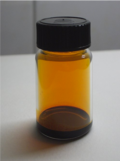Volatility (chemistry)
Volatility (chemistry)
In chemistry, volatility refers to the measure of the tendency of a substance to vaporize. It has implications in the fields of thermodynamics, physical chemistry, and chemical engineering. The term is primarily used to describe liquids, but it can also apply to solids and gases.
Definition[edit]
Volatility is a material quality which describes how readily a substance vaporizes. At a given temperature and pressure, a substance with high volatility is more likely to exist in the gaseous state than a substance with low volatility.
Factors Influencing Volatility[edit]
Several factors influence the volatility of a substance. These include temperature, pressure, and the intermolecular forces present within the substance.
Temperature[edit]
The volatility of a substance increases with temperature. This is because as the temperature rises, the average energy of the molecules also increases. This allows more molecules to overcome the intermolecular forces keeping them in the liquid or solid state, thus enabling them to enter the gaseous state.
Pressure[edit]
The volatility of a substance decreases with increasing pressure. Higher pressure makes it harder for molecules to escape from the liquid or solid state into the gaseous state.
Intermolecular Forces[edit]
The strength of the intermolecular forces within a substance also affects its volatility. Substances with strong intermolecular forces are less volatile because the molecules are held tightly together. Conversely, substances with weak intermolecular forces are more volatile because the molecules can more easily escape into the gaseous state.
Applications in Chemistry[edit]
Volatility finds applications in several areas of chemistry. For instance, in distillation, a common method of separation of mixtures, the differences in the volatility of the components are exploited to separate them. Similarly, in chromatography, the volatility of the components of a mixture affects their separation on the chromatographic column.
See Also[edit]
References[edit]
<references group="" responsive="1"></references>
-
Bromine in a vial
-
Vapor pressure chart
-
Alkane boiling and melting points
-
Crude oil distillation
Ad. Transform your life with W8MD's Budget GLP-1 injections from $75


W8MD offers a medical weight loss program to lose weight in Philadelphia. Our physician-supervised medical weight loss provides:
- Weight loss injections in NYC (generic and brand names):
- Zepbound / Mounjaro, Wegovy / Ozempic, Saxenda
- Most insurances accepted or discounted self-pay rates. We will obtain insurance prior authorizations if needed.
- Generic GLP1 weight loss injections from $75 for the starting dose.
- Also offer prescription weight loss medications including Phentermine, Qsymia, Diethylpropion, Contrave etc.
NYC weight loss doctor appointmentsNYC weight loss doctor appointments
Start your NYC weight loss journey today at our NYC medical weight loss and Philadelphia medical weight loss clinics.
- Call 718-946-5500 to lose weight in NYC or for medical weight loss in Philadelphia 215-676-2334.
- Tags:NYC medical weight loss, Philadelphia lose weight Zepbound NYC, Budget GLP1 weight loss injections, Wegovy Philadelphia, Wegovy NYC, Philadelphia medical weight loss, Brookly weight loss and Wegovy NYC
|
WikiMD's Wellness Encyclopedia |
| Let Food Be Thy Medicine Medicine Thy Food - Hippocrates |
Medical Disclaimer: WikiMD is not a substitute for professional medical advice. The information on WikiMD is provided as an information resource only, may be incorrect, outdated or misleading, and is not to be used or relied on for any diagnostic or treatment purposes. Please consult your health care provider before making any healthcare decisions or for guidance about a specific medical condition. WikiMD expressly disclaims responsibility, and shall have no liability, for any damages, loss, injury, or liability whatsoever suffered as a result of your reliance on the information contained in this site. By visiting this site you agree to the foregoing terms and conditions, which may from time to time be changed or supplemented by WikiMD. If you do not agree to the foregoing terms and conditions, you should not enter or use this site. See full disclaimer.
Credits:Most images are courtesy of Wikimedia commons, and templates, categories Wikipedia, licensed under CC BY SA or similar.
Translate this page: - East Asian
中文,
日本,
한국어,
South Asian
हिन्दी,
தமிழ்,
తెలుగు,
Urdu,
ಕನ್ನಡ,
Southeast Asian
Indonesian,
Vietnamese,
Thai,
မြန်မာဘာသာ,
বাংলা
European
español,
Deutsch,
français,
Greek,
português do Brasil,
polski,
română,
русский,
Nederlands,
norsk,
svenska,
suomi,
Italian
Middle Eastern & African
عربى,
Turkish,
Persian,
Hebrew,
Afrikaans,
isiZulu,
Kiswahili,
Other
Bulgarian,
Hungarian,
Czech,
Swedish,
മലയാളം,
मराठी,
ਪੰਜਾਬੀ,
ગુજરાતી,
Portuguese,
Ukrainian




